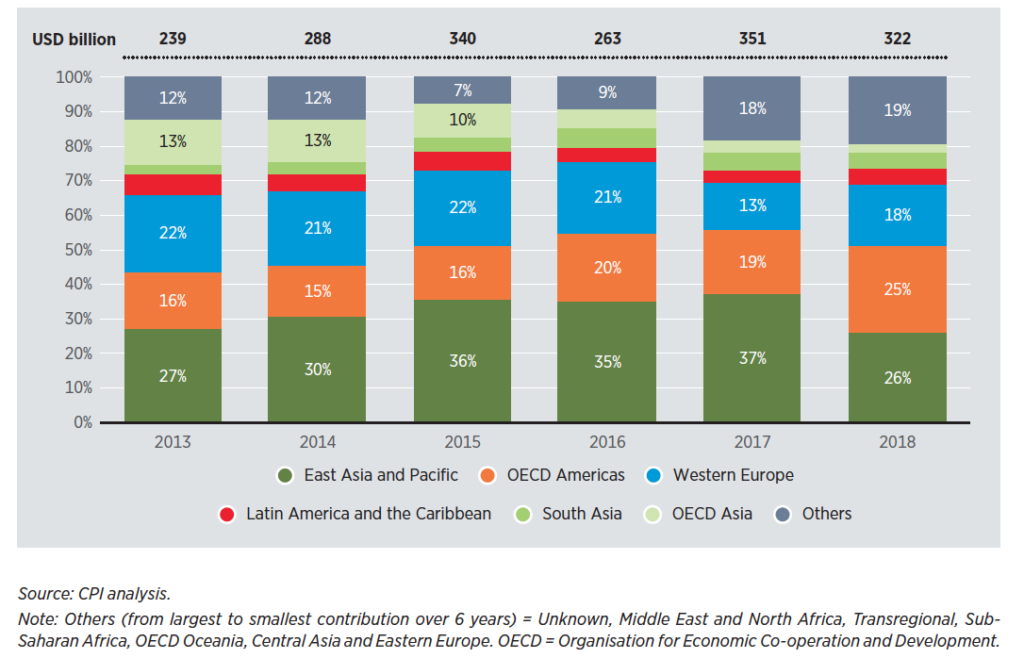By: Marc Aguilar, Yunish Ghimire
Climate change is one of the most pressing issues of this generation. The research on climate change data has made it abundantly clear the implications of rising global temperature on earth’s natural ecosystem especially those that are climate sensitive. The issue of climate change is aglobal one and hence requires solutions that are global in scope.
The studies on climate have indicated that the increasing global temperature will have a wide range of effects on the environment and socio-economic aspects including water resources, agriculture and food security, human health, and aquatic and terrestrial biodiversity. Changes in rainfall patterns will cause drought in some areas and flooding in others. Likewise, the intensity of natural phenomena such as forest fires and hurricanes will increase as already witnessed throughout the world in the last few years. Global warming will also impact the agricultural sector by disrupting the growing season and crop patterns. The increase in the global temperature will drive many species to extinction.
In an attempt to mitigate the impacts of climate change, the inter-governmental panel from all around the world in the Paris conventionagreed to limit the global temperature rise to 1.5 degrees Celsius. In a report presented by Intergovernmental Panel on ClimateChange (IPCC), limiting will help limit the adverse effects of rising global temperature. For instance, the same report highlights that limiting the temperature to 1.5 degrees Celsius would mean that the number of people exposed to extreme heat waves frequently will be reduced by 420 million to about 65million.
Although global conventions such as the Paris Agreement and Kyoto Protocol were established to address climate change, they have barely scratched the surface of this complex issue. These conventions have failed mainly due to the lack of incentives provided to encourage participation which further led to the problem of free riding. Since climate change policies are costly, certain countries have a strong tendency to free ride on the efforts of the countries that are actively spending on climate change issues.
Our economic systems are heavily reliant on fossil fuels such as gas and petroleum products. The emissions from vehicles and industries are the major source of carbon emission. Environmentalists, scientists, and economists all argue that curbing emissions is a very complex process thatinvolves the public, the economy, and the technology. William Nordhaus, a leading climate economist has outlined three major steps to mitigate greenhouse gas emissions. The first starts with the public which is by recognizing and understanding the impacts of climate change, the second is to establish carbon tax policies and finally focus on green technology to transition to alow-carbon economy.
Many environmentalists and economists still argue whether the carbon tax policy is the way forward. In an article, Bjorn Lomborg, a renowned environmentalist, points that the carbon tax will only fix around 5 percent to 10 percent of the problem. Thus, it is evidently clear that the best way forward is by investing to develop and distribute renewable resources which would ultimately help reduce our dependence on petroleum products and will be more beneficial in the longrun.
Global investments in renewable sources of energy have increased significantly in the past decade. The low cost of installment and the higher quality of the technologies have played an important role in this increase in the investments. However, the investments in 2020 saw a 34 % decline compared to 2019, as a result of the coronavirus outbreak. Nonetheless, the volatility of the petroleum products during this period could attract more public and private investors in green energy, which has clearly proven to be more resilient.
Overview of the global investment trends
A study conducted by Climate Policy Initiative (CPI) studied the global financing trends in the renewable resources sector from 2013 to 2018. The study shows that there is a gradual increase in investments, peaking in 2017 at around $ 351 billion. There is a slight decrease in the investments in 2018 at around $ 322 billion. Although the investments fell in 2018, the improved and cheaper technology allowed for more power generation capacity installed as compared to 2017.

The global financing landscape shows some encouraging improvement in the sector. However, to limit the global temperature rise to 1.5 degrees Celsius, there needs a significant increase in investments. The same report claims that to achieve this goal the annual global investments must triple from around $ 300 billion to almost $ 800 billion through 2050. The increase in the renewable energy sector must be coupled with the reduction in fossil fuel investments. In 2018, the investments in the fossil fuel industry amounted to $ 933 billion, which was three times more than their renewable counterpart.
INVESTMENT BY REGION

The trend shows that the East Asia region led by Japan, China, and South Korea are the leading investors, which attracted on average around 32 % of the investment in 2018, followed by Americas and Western Europe at 25% and 18% respectively. The investments in East Asia declined in 2018 partly due to a decline in the solar investments in Japan. The investments in theregion of Latin America and South Asia fall behind
How to attract more investments in this sector?
The role of renewable resources will be immense incurbing the emission of greenhouse gases. This will require a radical shift in the global energy systems. Integration of renewable energy sources through technological development and efficient energy measures coupled with phasing out from fossil fuel usages will be key to minimize the climate change impacts. The investments in this sector have seen positive changes throughout the years. However, there is still a lot to be desired for. A global shift in the energy sector requires more investments which can be achieved through the following:
Role of governments
Governments throughout the world will have an important role in creating an environment for investments in this sector. First and foremost, governments should lead the way in investing in the research and development of green technology. Since climate change is one of the most challenging issues, they should actively invest in developing the infrastructures by identifying the gaps in the private sector. Similarly, they can attract investors in this sector through direct grants and investments, loan guarantees, and tax incentives.
Issuing green bonds to finance renewable energy
Green bonds are the bonds issued by governments or corporations to fund environmental projects, including renewable energy. It can help attract major investors in this sector. It is important that the policymakers, markets, and investors work together to issue more green bonds and bolster their credibility among the participants. The standards of the green bonds issued should align with the climate targets which helps strengthen the credibility and prevent the risk of greenwashing.
Attract public investments
Although most of the investments are through the private sector, the public sector will play an important role in filling the gaps of financing. Attracting the public sector can be attained through innovative financing instruments, capacity building, and the instruments to mitigate or minimize the investment risk.





